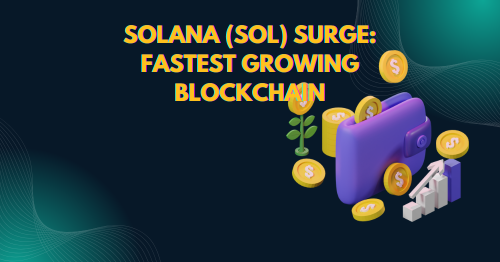
Solana (SOL) Surge Fastest Growing Blockchain
Solana (SOL) Surge: Fastest Growing Blockchain. In today’s fast-paced crypto market, few names shine brighter than Solana . Known for its high-speed transactions and scalability, Solana (SOL) has rapidly grown to become a top contender in the blockchain ecosystem.
What is Solana (SOL)?
Solana (SOL) is a cutting-edge blockchain platform built to support decentralized applications and crypto infrastructure at scale. Its core strength lies in achieving high throughput without sacrificing decentralization. The native token, SOL, powers transactions, governance, and staking across its ecosystem.
Unlike traditional blockchains, Solana (SOL) offers a unique combination of speed, low transaction costs, and robust scalability, making it a go-to platform for developers building on Web3. It is especially appealing for the Decentralized Finance platforms, NFT marketplaces, and next-generation gaming.
Read All About: Bitcoin (BTC), Ethereum (ETH) & Binance Coin (BNB)
Owner and Establishment Year
Solana (SOL) was founded in 2017 by Anatoly Yakovenko, a former engineer at Qualcomm, with deep experience in compression algorithms and distributed systems. He teamed up with Greg Fitzgerald, Raj Gokal, and Stephen Akridge to build what they envisioned as the “world’s fastest blockchain.”
Solana Labs, the development firm behind the project, still contributes to core protocol upgrades and tooling. However, the network has grown into a decentralized ecosystem governed by its community, validators, and stakeholders.
History and Development
Solana (SOL)’s journey began with a whitepaper published by Yakovenko in 2017, introducing the innovative concept of Proof of History (PoH). The concept addressed one of blockchain’s toughest challenges—synchronizing time across decentralized nodes without compromising trust.
After extensive testing and feedback, Solana (SOL) launched its testnet in 2018, raised funding through private token sales in 2019, and finally rolled out its mainnet beta in March 2020.
Since then, the network has seen massive adoption. It survived early technical setbacks and security debates to evolve into a trusted ecosystem, housing over 400+ dApps, millions of active users, and billions in total value locked (TVL) across DeFi.
Key Features and Underlying Technology
Here’s what makes Solana (SOL) technically superior:
- Proof of History (PoH): This innovative timestamping mechanism enables nodes to process transactions in parallel, increasing efficiency.
- Scalability: Theoretically capable of 65,000+ transactions per second, Solana (SOL) dwarfs traditional blockchains in performance.
- Low Fees: Transactions cost a fraction of a cent, ideal for micro-transactions and high-frequency trades.
- Parallel Smart Contracts: Solana (SOL) supports parallel execution of smart contracts, which boosts performance under heavy load.
- Developer-Friendly Ecosystem: Rust, C, and Solana-specific SDKs make development accessible and efficient.
- Composability: All apps exist on a single global state, improving interoperability.
These features have earned Solana (SOL) the nickname “Ethereum Killer,” thanks to its unmatched performance and economic efficiency.
Use Cases and Adoption
The use cases for Solana (SOL) span multiple high-impact sectors:
- DeFi (Decentralized Finance): Protocols like Marinade, Serum, and Raydium use Solana (SOL) for lightning-fast swaps, staking, and yield farming.
- NFT Ecosystem: Platforms like Magic Eden, Solanart, and Metaplex enable low-cost minting and trading of NFTs, making it accessible to a wider audience.
- Gaming and Metaverse: Solana (SOL) supports projects like Star Atlas and Aurory, pushing boundaries in blockchain gaming.
- Payments and Micropayments: Its negligible transaction fees make it ideal for real-time, on-chain payments across borders.
- DAOs and Governance: Solana-based DAOs use SOL to fund and manage decentralized organizations.
Adoption is rising globally, with Solana (SOL) gaining traction in Southeast Asia, Latin America, and Africa due to its low costs and developer grants.
Price Trends and Market Insights
Solana (SOL) began trading at under $1 in early 2020, soared past $250 by late 2021, and then corrected during the broader crypto winter of 2022. Despite temporary network outages and macroeconomic factors, it has rebounded with renewed confidence in 2024 and 2025.
As of now, Solana (SOL) remains one of the top 10 crypto assets by market cap, with billions traded daily. Institutional investors and hedge funds are increasingly allocating to SOL due to its technical maturity and promising roadmap.
Top crypto analysts predict continued upward movement, especially with Ethereum gas fees remaining high and Layer-2 congestion issues unresolved. Platforms like CoinGecko and Messari offer real-time data, performance charts, and analytics for informed investors.
How to Buy and Store Solana (SOL)
Step-by-Step Guide to Buy Solana (SOL):
- Select an Exchange: Choose from Binance, Coinbase, Kraken, KuCoin, or local exchanges that list SOL.
- Create and Verify Account: Complete KYC requirements for account activation.
- Deposit Fiat or Crypto: Fund your account with INR, USD, or BTC/ETH.
- Trade for SOL: Place a buy order and secure your Solana (SOL) tokens.
Wallet Options for Storage:
- Hot Wallets: Use Phantom, Solflare, or Trust Wallet for convenience and dApp connectivity.
- Cold Wallets: Prefer Ledger Nano X or Trezor Model T for long-term security.
Tip: Always enable 2FA and store your recovery phrase offline. For large holdings, use hardware wallets to avoid phishing or hacks.
Future Outlook and Predictions
The road ahead for Solana (SOL) is filled with opportunities:
- Firedancer Validator Client: Developed by Jump Crypto, this new validator aims to make the network 10x faster and more resilient.
- Continued Ecosystem Funding: Solana Foundation has pledged millions to fund new projects, offering grants and bootcamps worldwide.
- Decentralization Improvements: The validator count is increasing rapidly, boosting security and censorship resistance.
- Cross-Chain Compatibility: Solana (SOL) is working on interoperability with Ethereum and Bitcoin, bridging the liquidity gap.
- Mainstream Collaborations: Solana Pay and Shopify integrations could bring blockchain payments to global e-commerce.
Experts at CoinTelegraph and Bloomberg have predicted that if Solana maintains its momentum, it could become the backbone of Web3 infrastructure within the next decade.
However, as with any crypto investment, market volatility, regulatory uncertainties, and technical risks remain. Staying updated with trusted sources and community updates is crucial.
Final Thoughts
Solana (SOL) has redefined blockchain performance standards. Whether you’re a casual investor, a developer building the next big dApp, or a researcher exploring crypto economics, Solana (SOL) offers unmatched speed, low fees, and a vibrant ecosystem.
As blockchain adoption accelerates globally, Solana is poised to remain a central player in shaping the future of decentralized finance, gaming, and data exchange.
I work as a content writer in the blockchain and cryptocurrency domain. I have a keen interest in exploring the world of digital assets, Web3, and emerging crypto technologies. My goal is to provide readers with easy-to-understand, engaging, and trustworthy insights, helping them stay informed and confident in the rapidly evolving world of crypto and blockchain.


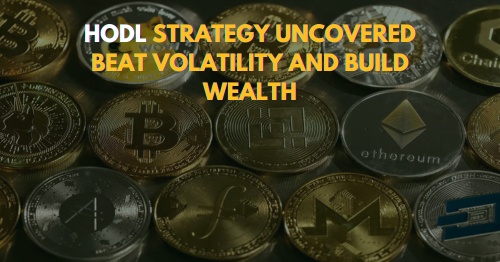
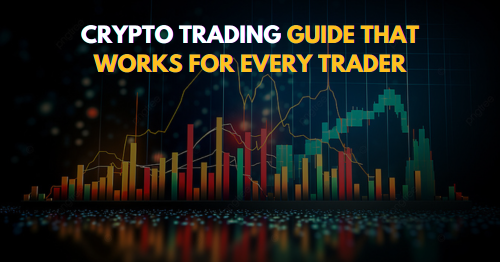
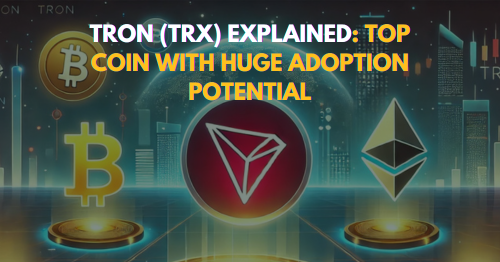
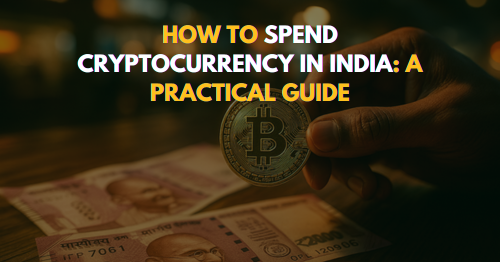
1 thought on “Solana (SOL) Surge: Fastest Growing Blockchain”